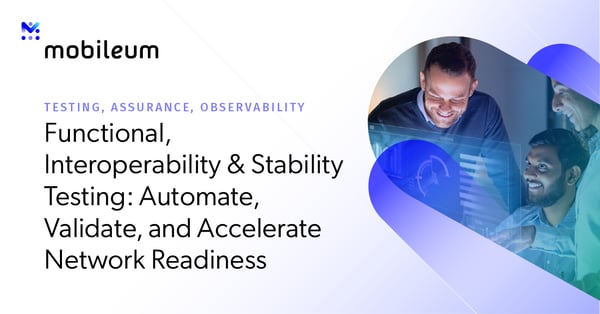Cloud-native network functions (CNFs) are relatively new in Telecom, and their interactions with each other and the cloud environment are complex.
Traditionally, the approach has been isolated testing of the Network Function Virtualization Infrastructure (NFVI), the basic functionality of VNFs and CNFs running the services over it, and the packet core functionality, interoperability, and performance. This often leads to unexpected issues and behavioural differences when all these components are put together and real network load is applied.
Given that cloud-based environments typically rely on multiple vendors, it becomes increasingly difficult to assure performance and isolate issues to a particular root cause. As the network load increases, the demands of the VNFs and CNFs running the services upon the NFVI increase and can compete for resources. It therefore becomes important to ensure the NFVI is optimally provisioned and appropriate policies configured (e.g., affinity rules, scaling limits, etc). Under provisioning affects network performance and customer QoE; over provisioning leads to higher costs.
With the world becoming more unpredictable with many bad actors trying to attack networks, security issues also need to be factored in. If someone manages to penetrate the infrastructure, it is very important to be confident that your pods (the smallest deployable unit of compute in Kubernetes) can cope with attack without failing or affecting QoE.
Combined Testing
Testing in isolation is no longer good enough. Tier 1 MNOs in particular are requesting integrated test solutions so once basic testing of the NFVI and Packet Core is complete, the entire infrastructure can be tested under realistic load so that inter-dependencies and design issues can be identified prior to deployment.
Testing Topology

Following individually testing the NFVI, VNFs, and Packet Core, the cloud under test is simultaneously subject to simulated VNF/CNF testing, whilst the pod(s) containing the packet core load generator is ramped up at known intervals. The load can comprise any 4G/5G NF or subsystem. Complex load patterns comprising typical simulated services over emulated NFs with any combination of subscriber load rates are created, providing a realistic customer mix. This is particularly important as packet core performance can be affected by multiple NFs being distributed across multiple servers running in multiple pods, so the ability to accurately simulate load, such as BCHA, to be sure the whole infrastructure works cohesively lowers the risk of performance issues significantly. The possibility to generate additional stress by creating negative scenarios or using fuzzing to increase CPU load above that expected is also very helpful. It is therefore particularly important to understand the interaction of packet core functions at load in order to be sure that NFVI asset allocation is operating appropriately and not constraining overall performance. Whilst the packet core is being stressed, the NFVI test system provides detailed analysis of the performance of the compute, storage, and communication bandwidth being consumed. This, combined with packet core tracing and deep root cause information, allows a full understanding of any issues.
2. Chaos Recovery test
Chaos test is used to ensure that the NFVI can endure and recover from unexpected cloud behaviour. In the case of chaos test, the NFVI test system creates chaos conditions into one or the other of the pods containing the packet core load test system. Behaviour, packet loss, and recovery can be monitored by the NFVI system, whilst the packet core system provides a real-time view of the state machine of the types of services being simulated and at the same time provides PCAP analysis to determine which NF interfaces are being affected by the chaos conditions.
3. Automation
CI/CD deployment methods require automation to ensure consistency and repeatability of tests in the most time-efficient manner. It is therefore important that the complex load test is created in a manner that requires as little pipeline scripting as possible; otherwise, the network test time challenges just become coding and test auditing challenges.
The creation of test suites where individual sub-tests can be easily incorporated or omitted without the resort to coding greatly eases regression testing when dealing with frequent network changes.
Summary
Combined automated testing of the NFVI infrastructure and packet core under complex load enables the operator to deploy changes and new network functions with a much higher degree of confidence, lowering the risk that unexpected anomalies will degrade customer experience or damage brand reputation. If the above topics are of interest, then contact us today to explore more.




Let Us Know What You Thought about this Post.
Put your Comment Below.